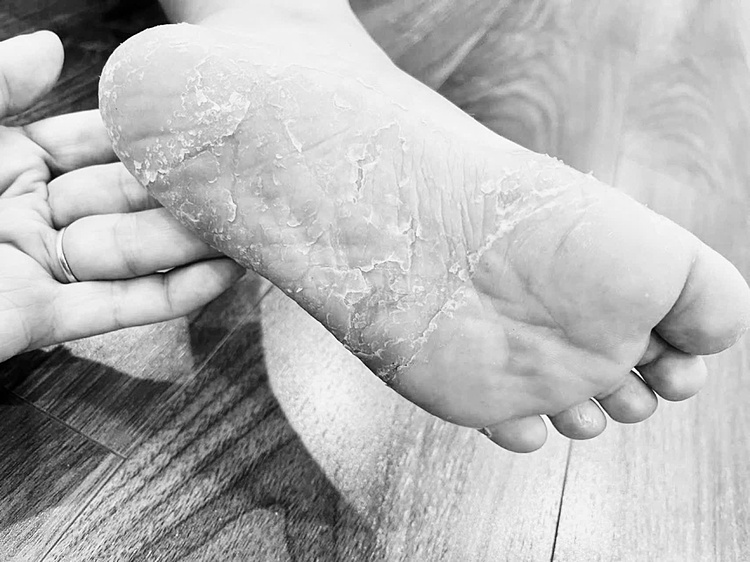Typhoon Wipha caused flooding in many areas of north central Vietnam, especially in Nghe An, forcing residents to endure prolonged exposure to dirty water and damp conditions. This creates an ideal environment for skin diseases to develop, some of which can lead to serious complications if not treated properly.
Doctor Nguyen Tien Thanh, a member of the Vietnam Dermatology Association, said that living in damp, polluted environments for extended periods increases the risk of skin diseases. This not only causes itching or rashes, but wounds can also become infected, potentially leading to sepsis if people are negligent or self-medicate incorrectly.
Here are some common skin conditions that occur after floods:
Contact dermatitis. Prolonged immersion in floodwater weakens the skin's protective barrier, allowing irritants and allergens to penetrate easily, causing contact dermatitis. The condition typically manifests as redness, blisters, burning, itching, and pain in the affected area. People should avoid the irritant, keep the skin dry, and may use mild corticosteroid creams or oral antihistamines to reduce inflammation.
Fungal infections. Fungal skin infections are common after floods, especially on the feet, groin, armpits, and back. Common symptoms include redness, itching, scaling, and small blisters. A common mistake is self-medicating with corticosteroids, which temporarily masks the fungal infection but allows it to spread more quickly and deeply, making treatment more difficult. People should use topical antifungal medications and avoid combining medications without consulting a dermatologist.
Secondary infections from minor scratches. During post-flood cleanup, people are prone to skin injuries from bumps and falls. When these injuries come into contact with dirty water, bacteria can enter and cause infections such as cellulitis, necrosis, or, more seriously, sepsis. To limit complications, wash wounds with clean water or saline solution, apply antibiotic ointment like mupirocin, and closely monitor for signs of infection such as swelling, fever, and spreading pain.
Insect bites. The post-flood environment is ideal for the proliferation of mosquitoes, ants, fleas, and bed bugs. Bites not only cause itching but also carry the risk of allergies or infections. People should wash the bites, avoid scratching, and may apply corticosteroid creams and take oral antihistamines to reduce itching. If there is widespread swelling, pain, pus, or swollen lymph nodes, seek medical attention.
 |
A patient with dermatitis. Photo: Doctor provided |
Doctor Thanh emphasized that maintaining personal and environmental hygiene after a flood is crucial for preventing skin diseases. After contact with floodwater, people should wash with clean water, dry their entire body thoroughly, especially in crevices. Avoid prolonged contact between damp clothing or shoes and skin, as this creates an ideal environment for fungal growth.
Furthermore, never self-medicate with strong corticosteroids without a proper diagnosis, as this can worsen the condition, mask symptoms, and make treatment more challenging.
Not all skin lesions can be treated at home. If itching persists for 3-5 days, or if a wound becomes swollen, red, develops pus, oozes, smells bad, or is accompanied by fever or fatigue, seek medical attention immediately. These could be signs of cellulitis, necrosis, or systemic infection.
Thuy Quynh












